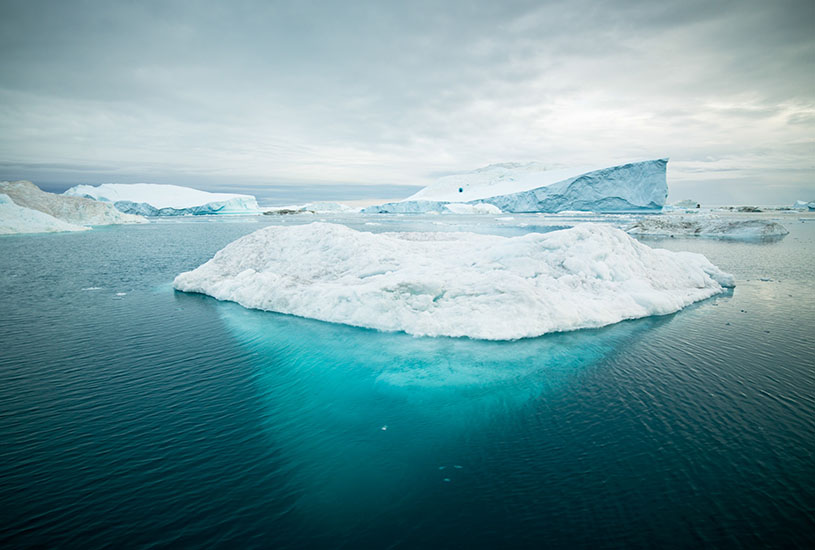Global warming is having a significant effect on of the world’s most delicate ecosystems – the tundra of arctic and alpine areas.
A paper co-authored by nearly 130 scientists around the world, including a Deakin University botanist, describes noticeable changes in tundra plant life.
The paper, Shrub expansion in tundra ecosystems: dynamics, impacts and research priorities, published in “Nature”, closely examined tundra ecosystems, which include treeless arctic and alpine environments, and where plants grow at their physiological limits due to tough conditions.
Deakin botanist Dr Susanna Venn, a Senior Lecturer in the School of Life and Environmental Sciences and the sole Australian author on the paper, said the ‘tundra’ took its name for the Finnish word for ‘treeless plain’.
“The tundra has long been the domain of low-growing grasses, sedges and herbaceous plants. Defying the harsh conditions, these plants huddle close to the ground and often grow only a few centimetres high,” she said.
But Dr Venn, and colleagues from around the world have spent the past few years closely monitoring the plants in these environments and have found noticeable changes.
The study, led by scientists from the Senckenberg Biodiversity and Climate Research Centre, and the German Centre for Integrative Biodiversity Research, encompassed almost 120 tundra sites, most of them located in Arctic regions of Alaska, Canada, Iceland, Scandinavia and Siberia.
Dr Venn collected plant samples from the Swiss Alps, but said the tundra biome was also represented in Australia in places like the Bogong High Plains in Victoria and the Snowy Mountains in New South Wales, supporting native snow daisies, short grasses and mat-forming plants.
“What we found was an overall increase in the height of tundra plant communities over the past three decades,” she said.
“The increase in height we saw was not just in a few sites but nearly everywhere, and we can identify climate warming as the underlying cause.
“Temperatures in the Arctic have risen by about 1 degree Celsius in summer and 1.5 degrees in winter over the three decades covered by the study, some of the fastest rates of warming on the planet.”
A detailed analysis showed that not only do individual plants grow taller with warmer temperatures, but that the plant community itself has also shifted.
“Taller plant species, either from warmer pockets within the tundra or from southern or lower elevation areas, have spread across the tundra,” Dr Venn explained.
“If taller plants continue to spread at the current rate, the plant community height could increase by 20 to 60 per cent by the end of the century.”
Surprisingly, the researchers found no evidence that this “invasion” of taller species was currently leading to a decline in shorter species.
But Dr Venn said the increase in taller species could speed up climate warming, by affecting the important carbon storage work done in the tundra.
[testimonial_text]Arctic regions have long been a focus for climate change research, as the permafrost underlying tundra vegetation contains one-third to half of the world’s soil carbon.[/testimonial_text]
[testimonial_picture name=”Dr Susanna Venn” details=”Senior Lecturer, School of Life and Environmental Sciences”]
 [/testimonial_picture]
[/testimonial_picture]“When the permafrost thaws, greenhouse gases can then be released. An increase in taller plants could speed up this process as taller plants trap more snow in winter, which insulates the underlying soil and prevents it from freezing quickly and deeply in winter,” she said.
Plants with bigger leaves also affect the reflectivity (albedo) of the system, in that they absorb more heat from the sun, and this also leads to soils warming and drying out.
“Although there are still many uncertainties, taller tundra plants could fuel climate change, both in the Arctic and for the planet as a whole,” Dr Venn said.
In contrast to plant height, researchers found that six other measures, such as the size of leaves and their nitrogen content, showed no consistent change over the last thirty years. These other plant characteristics were strongly influenced by soil moisture levels in addition to temperature.
The researchers believe that the response of the plant community as a whole to climate warming will depend on whether the tundra becomes wetter or drier over time.
“In order to predict how the plant community in the tundra will react in the future, it’s necessary to not only take into account alterations in temperature, but also in water availability,” Dr Venn said
“If precipitation or the water cycle change, or if the timing of snowmelt shifts, this may have severe effects on the tundra vegetation.”
Published by Deakin Research on 12 October 2018



